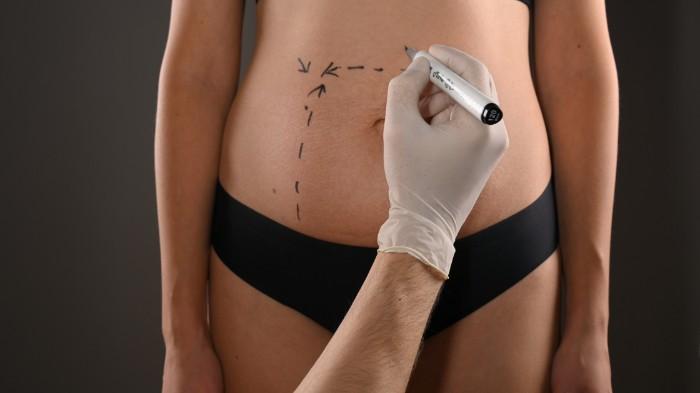The Rise of Facial Rejuvenation for Men Gone are the days when skincare and cosmetic procedures were exclusively for women. Today, men are increasingly embracing facial rejuvenation to enhance their appearance, combat facial aging, and boost their confidence. With advanced facial rejuvenation techniques, non-invasive procedures, and surgical options, men now have access to treatments tailored…
Breast implants have been around for quite some time, and they have become increasingly popular in recent years. If you’re considering getting breast implants, you’ve probably wondered how often they need to be replaced. The answer depends on a variety of factors, including the type of implant you choose and your body’s natural aging process. Let’s take a closer look at the different type of implants and when you should consider replacing them.
Types of Implants
The two main types of breast implants are saline and silicone.
Saline Implants
Saline breast implants are a popular choice for women looking to have their breasts augmented. These implants are filled with a saltwater solution, which makes them both lightweight and durable. Because the saline is usually contained in a silicone bag, it is considered extremely safe for women if a saline implant rupture occurs. Besides the safety features, one benefit of saline implants is that they allow for greater control when it comes to final sizing and shape as doctors are able to adjust the amount of saline used during implantation. Additionally, recovery times tend to be quicker with saline implants versus other forms of augmentation. Ultimately, this type of implant provides many advantages in terms of safety and aesthetics that make it an appealing option for those considering cosmetic surgery.
Silicone Implants
Silicone breast implants are one of the most popular types of implants available today. They are filled with an elastic type silicone gel that is designed to move and shape similarly to natural breast tissue. The material allows for a more natural feeling, and the implant can be placed either above or below the chest muscle. However, one major draw back is that the life span of silicone breast implants is not indefinite. Most manufacturers recommend having them removed or replaced after 10-15 years; although some studies have suggested that being proactive about replacing them within 10 years can reduce the chances of longterm complications. It is important for women to regularly consult with their doctor on implant health as well as receive MRI scans every few years post-implantation. When a silicone implant ruptures, the silicone gel can leak out into the surrounding breast tissue. In some cases, there may be no visible signs of rupture and it can go unnoticed for years. The most common signs of rupture are changes in the shape or size of your breast, pain around the area of implantation, swelling or inflammation near the implant site, and other unusual sensations. If you experience any of these symptoms, contact your doctor immediately to have them assessed.
Changes in Your Body Over Time
As we age, our bodies naturally change as well, which can cause one or both implants to shift or become misshapen over time. This can particularly be true if you experience a significant weight change following the surgery or pregnancy.
Weight Change
Significant weight fluctuation can have a dramatic effect on breast implants. Since these implants are not integrated into the bone structure, they can become displaced if the underlying tissues change significantly due to a weight gain or gain. Additionally, losing and gaining weight consecutively – known as “yo-yoing” – can lead to further displacement of the implant and scarring along the implant edges. This process is usually known as capsular contracture, and it requires surgical intervention to correct. It is therefore important for individuals undergoing breast augmentation to maintain a stable weight, both before and after their procedure, in order to prevent any long-term complications of significant weight changes.
Pregnancy
Women who have breast implants may experience changes to the look or feel of their breasts during pregnancy. This is due to normal hormonal fluctuations in the body, as it prepares for childbirth. Although the actual implants won’t change, some women may experience sagging or shrinking in size due to the additional weight gained during pregnancy. In addition, pregnant women with breast implants may see changes in nipple sensitivity and areola shape, which can sometimes be permanent. To minimize any potential risks, experts recommend speaking to a board-certified plastic surgeon before attempting pregnancy with breast implants—so they can provide informed guidance on monitoring the implant’s condition and positioning throughout the gestation period.
Even if you don’t experience any major changes in your body over time, it may still be necessary to replace them due to normal wear and tear from everyday activities like exercise or sports activities—so it’s important to keep this in mind when deciding whether or not it is worth investing in them for the long term.
Other Factors
Some other factors that can affect how often you need to replace your breast implants include:
Implant Size
Many factors contribute to the wear and tear of breast implants, but size is definitely one of them. Larger implants put more strain on the surrounding tissue, which can lead to stretching and sagging over time. In addition, they are more likely to cause rippling and other visible deformities. All of these factors can contribute to a shorter lifespan for your implants.
Textured VS Smooth
Textured breast implants are designed to have a much longer lifespan than their smooth counterparts. This is because the textured surface encourages tissue ingrowth and adhesion, creating a strong bond between the implant and surrounding tissue. This reduced risk of movement and detachment means that textured implants generally last much longer—sometimes up to 20 years or more! Not only do these implants last longer, but due to the increased tissue ingrowth, many surgeons prefer them for improved aesthetic results without added risk of harsh scarring. Thanks to modern science, this type of implant provides women with the benefits of longevity and safety while optimizing their aesthetic goals.
Surgical and Recovery Related Complications
Breast implants are a popular cosmetic procedure, but there are risks associated with this surgery. As the implants age, possible complications can arise. The most common is capsular contracture, where the scar tissue around the implant hardens, which can cause discomfort and require further surgery to remove or replace the implant. Scars may also form around the surgical incision site, as well as discoloration, thinning of tissue, wrinkling and rippling of the implant. There is also a small risk of infection and blood clots during any surgery. Additionally, if there were any issues with implant placement during surgery (such as asymmetry) then these may need to be addressed sooner rather than later by either adjusting the implant(s) or replacing them altogether. In rare cases, there can be an autoimmune response to foreign material in the body that can cause ongoing health issues that require medical attention or breast implant removal. For those considering breast implants it’s important to weigh both the benefits and potential risks before undergoing any treatment.
In conclusion, it is important to understand that all patients are different and that each individual case must be assessed on its own merits when considering how often one needs replacement breast implants. The best thing that you can do is consult with an experienced plastic surgeon who will help determine what type of implant works best for your particular situation as well as how often one should consider replacing them down the road. With proper care and maintenance, most people find that their breast implants remain intact for many years—but it never hurts to have a backup plan just in case! If you’re in need of a breast implant replacement or removal, or are interested in getting them for the first time, don’t hesitate to contact our team at La Belle Vie for a free initial consultation to see how we can help you!



